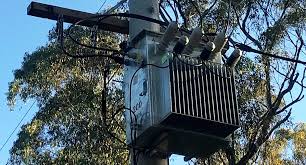Understanding Electricity Supply Charges: Why They Vary and What It Means for Your Home

For a typical single dwelling, your home is generally allocated around 10 kW of power, protected by a service or meter protection fuse. But your home doesn’t operate in isolation — it’s part of a shared local network.
Usually, 25 to 50 homes are grouped together and connected to a local distribution transformer, which is typically rated at 315 kVA. The exact transformer size can vary depending on the area’s housing density. Utility providers — known as Distribution Network Service Providers (DNSPs) — use standardised planning models to repeat this transformer-to-home ratio across suburbs, ensuring the network remains balanced and efficient.
While your power allocation is limited and shared among many homes, the infrastructure that supports it — the poles, wires, meters, and transformers — must still be maintained and upgraded over time. That’s where the daily supply charge comes in. This fixed fee on your electricity bill covers the cost of delivering power to your premises, regardless of how much energy you use. For typical single homes, this charge remains steady — even if you add solar, an EV charger, or a granny flat — as long as your overall demand stays within your original residential allocation.
But What About Bigger Setups Like Apartment Complexes?
When we shift from single dwellings to multi-unit residential buildings or commercial setups, things start to change. These sites usually draw much higher loads — especially if they house multiple high-powered appliances like EV chargers, centralised air conditioning systems, or operate common area lighting around the clock.
In these situations, DNSPs often install larger transformers and infrastructure to handle the extra demand. To reflect the greater strain placed on the network, these sites are charged higher daily supply charges, or they may even fall into commercial tariff categories.
A Key Difference: The Type of Meter
Instead of the standard accumulation or time-of-use meters found in single homes, larger buildings often use commercial demand meters. These meters not only track total energy consumption (in kWh), but also measure peak demand (in kVA). This allows the energy provider to calculate demand charges — a fee based on the highest level of power drawn at any one time.
If a complex exceeds its allocated demand threshold, it can incur penalties or be reclassified into higher commercial pricing tiers. So, unlike a typical home — where the supply charge is predictable — high-demand sites must manage both how much energy they use and when they use it to avoid expensive surprises.
Why Does This Matter?
Understanding the basics of supply charges helps clarify why your bill looks the way it does — and why a neighbour in a high-rise complex might pay significantly more just to stay connected. It’s all about network load, usage patterns, and infrastructure planning.
Whether you’re a homeowner planning a solar install, managing a multi-dwelling complex, or just curious about your electricity costs, knowing how supply charges work gives you the power to make smarter energy decisions.
Ensuring Compliance with Connection Limits Using Action Electricians’ EV Charging Solutions
When considering the installation of EV chargers, especially in multi-unit residential complexes or commercial settings, it’s crucial to ensure that the additional load doesn’t exceed your property’s allocated connection size. Exceeding these limits can lead to higher supply charges or even reclassification into a commercial tariff category.
Action Electricians offers comprehensive EV charging solutions that include monitoring your site’s energy usage. Their systems can demonstrate to service providers that the installation of EV chargers will not surpass the allocated connection size. Even if an application to connect large loads isn’t required, their solutions help ensure that your energy consumption remains within permissible limits, preventing potential penalties or infrastructure upgrades.